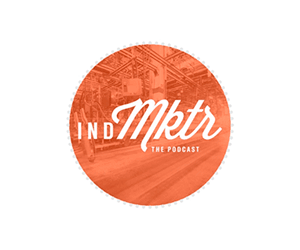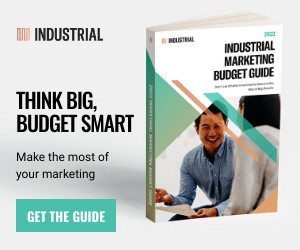Content is an important tool to help engineers and industrial professionals make informed, educated decisions at all stages of the buying process. Research indicates that the average buying cycle is 12 weeks long, with the typical engineer involved in four projects per year. This means that purchasers and influencers are continuously conducting research and needs analyses, making comparisons and evaluations, and purchasing products.
Given the research, sourcing, and purchasing behavior of your target audience, it’s critical for you to produce and distribute valuable and authoritative content that positions your company as an expert, builds your trust with prospects, and ultimately makes it easier to sell products and services. Research conducted by the Content Marketing Institute and Marketing Profs shows that 85 percent of manufacturing marketers are now participating in content marketing.
If you are like most industrial marketers, content marketing is going to play a role in your plans for 2017 and beyond. While it’s an essential marketing strategy, it also presents challenges that you must overcome to be successful. Among them is producing engaging, relevant, and current material on a consistent basis. Sixty-two percent of manufacturing marketers attribute content creation challenges to their stagnancy in success with content marketing.
How do you ensure that your content is fresh and truly resonates with the engineers and technical professionals you want to reach? Here are three principles to follow to generate successful marketing content.
Know your audience.
Before you begin creating content, you need to understand who your target audience is and what you want to communicate to them. Here are some questions to ask:
-
Do I have the knowledge to create valuable, relevant content on this topic?
There are two sides to this. First, you want to ensure that you have the level of expertise necessary to develop content that’s appropriate for your audience. Then, you want to be certain that you have a point of view that’s somehow unique in the marketplace.
-
Who is my audience? At what level do I need to address them?
The answer to this question can vary by the piece of content being created. Your audience can be broad or niche, depending on your marketing goals. And if you have multiple professionals that you are looking to influence with your content, you will need to create materials that resonate with different decision makers.
-
What is the intent of my content?
Ask yourself why you are creating this content. Is it to educate? To motivate? To challenge existing industry viewpoints?
-
What do I want to see as a next step for prospects or clients who read my content?
Ideally, every piece of content that you produce should have some sort of a call to action. It doesn’t necessarily mean you are directing them to make a purchase. It can be to share your content, read another relevant article, watch a video, or sign up for a webinar. The goal is to keep your audience engaged.
Follow the five fundamental steps to content creation.
You’ve identified your audience and know what you want to communicate with them. Next you want to develop your content in a deliberate, thoughtful manner.
-
Map your content to the buyer’s journey.
Identify the different personas you need to reach with your content. Tailor your content appropriately for each audience.
-
Define your content deliverables.
After you’ve mapped your content to the buyer’s journey, think about the form of content you will be creating. This is where content repurposing can be useful. What existing assets do you have that can be freshened up or modified for different audiences and different formats? When creating new content, make sure you can get the most reach for your efforts by pushing the content out in different ways to different audiences.
-
Conduct a content audit.
Before producing new content, consider what you already have in your content library. You invest significant time and resources into every piece of content you create. A content audit will help you identify where you can extend the shelf life of existing content, generating maximum return on your investment.
-
Develop a content calendar.
This is a critical step that many industrial marketers often skip. A content calendar can serve as a guide and ensure that your content is aligning with a strategic plan.
-
Prepare for content production.
How will you execute your plan? Are you relying on in-house marketers and content experts, or are you working with a trusted third-party resource? This will help maintain the quality of your content.
Keep an eye on ROI.
The pressure has never been greater for marketers in the industrial sector to demonstrate results from their marketing programs. When it comes to content marketing, you want to be able to illustrate that your efforts are making an impact.
But measurement is often easier said than done. According to the Content Marketing Institute and Marketing Profs, a third of manufacturing marketers cite content measurement challenges as a factor contributing to stagnant success in content marketing over the past year.
How you measure content performance should align with metrics you have already identified and established for your other marketing programs. Consider metrics based on:
-
Consumption:
the number of people who viewed, downloaded, or listened to content. Examples include page views, newsletter open rates, and click-through rates.
-
Engagement:
your audience’s involvement with your content. This includes time on page; pages per session; newsletter forwards; or followers, likes, shares, and comments on social media.
-
Demand:
the number of readers and viewers who identify themselves in exchange for the content you have to offer. Examples include registering to access gated content, including white papers and webinars.
Content marketing is an essential component of today’s industrial marketing toolkit. Adding some simple steps to your content marketing plan will ensure you consistently deliver fresh content — and maximize the time and resources that you devote to content development and distribution.




